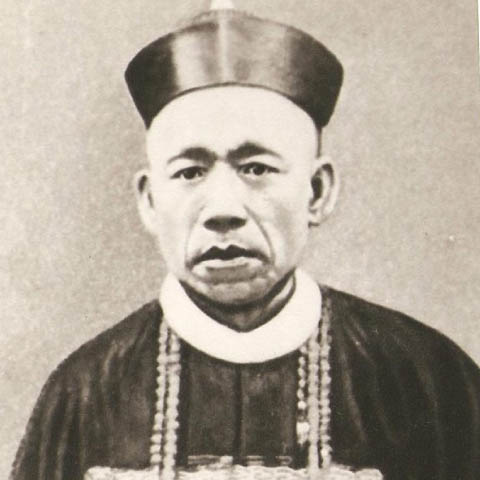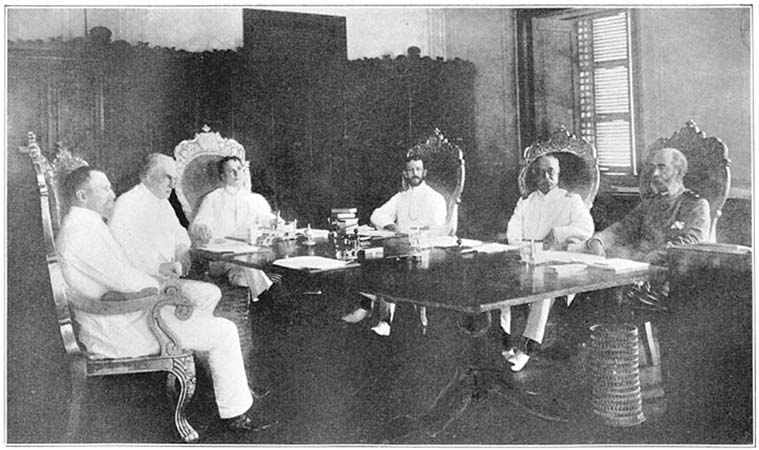
Editor’s Note: For this issue, we are reprinting Carlos Palanca’s second testimony before the Philippine Commission on July 8, 1899 (see Tulay June 19-July 9, 2018 issue for his first testimony). Carlos Palanca or Chan/Tan Quiensien (陳謙善) was a famous capitan chino during the latter part of the Spanish period, in the 19th century. He also served as acting consul general of China in 1899 until the appointed official Chinese consul general, his son Engracio Palanca/Tan Kang (陳剛), was able to assume the position.
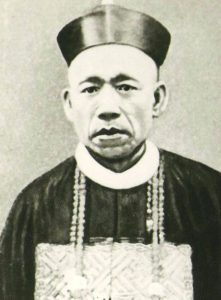
Testimony of Carlos Palanca
Manila, July 8, 1899
Present: Colonel Denby (in the chair), Professor Worcester, and John R. MacArthur, secretary.
Carlos Palanca, recalled (to testify – Ed.):
By Colonel Denby:
Q. Will you kindly give us your Chinese name?
A. Don Chan Quiensien is my Chinese name, and I am generally known among the Chinese in Manila and the Philippines as Don Chuey Leong.
By Mr. MacArthur:
Q. How did you come to get the name Carlos Palanca?
A. That is my Christian name.
Q. Are you a Christian?
A. I am a Roman Catholic.
By Professor Worcester:
Q. We understand you have something to say about the condition of trade and mining in these islands, and we would be glad to hear what you have to say.
A. I have written a statement about all the islands, what are the products of these islands, and the dialects they speak, which I hand to you.
Colonel Denby: We are very greatly obliged to you for taking that trouble.
(Statement handed to Professor Worcester.)
By Professor Worcester:
Q. You say that sugar is raised in Bulacan province. What sort of machinery do they use for refining their sugar there?
A. Some of the machinery is got from Europe and some from China; the grinding machinery is generally two great blocks of stone – it was formerly. At present, some use water power, some use carabaos and some steam.
Q. When it comes to boiling the juice of the sugar cane, what contrivance have they for that?
A. It is boiled in a big pan, some lime is mixed along with the juice, and from the pan it is turned into a filter.
Q. Do they stir their sugar or dry it when putting it into these filters anywhere in Luzon?
A. In Batangas, Iloilo, Bantagana, Cebu and Antique, Negros Occidental and Mayong.
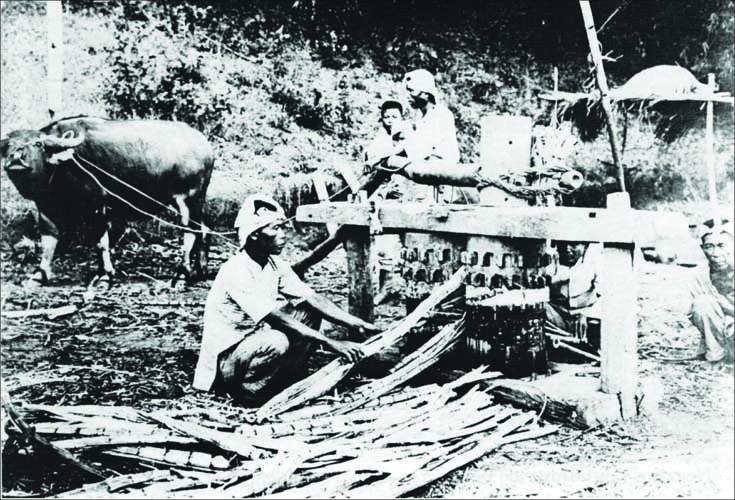
Q. Are there any Chinamen here who have sugar estates in the Philippines?
A. Yes.
Q. In Luzon?
A. Yes.
Q. How long does it take after a field is planted before the cane is ready to cut?
A. Once a year, they crush the juice, dividing the field into two parts, leaving one part barren while they work on the other. From November they work up until May – about six months.
Q. Grinding the cane?
A. Yes, grinding the cane.
Q. What conveniences are there for getting their sugar to market?
A. In Negros and Antique and Capiz and Amos Occidental and Oriental, all these provinces send their sugar down to Iloilo and sell crude sugar there.
Q. How do you get the sugar to coast before you ship it?
A. By buffalo carts, into the storehouse close to the river side or seaside, up to which the steamer comes.
Q. How do they get it there from the plantations?
A. By bull carts.
Q. Are there sugar lands in Luzon that are not worked now that could be worked if railroads were run to them?
A. Yes.
Q. You have put down here that the vino del piez comes from Bulacan. What do you mean by that?
A. The juice of the nipa.
Q. What sort of a business is it?
A. You tap the nipa palms and get the juice and make alcohol.
Q. How does it pay?
A. It is a very good business.
Q. What is that alcohol worth an arroba here now?
A. Formerly, before the war, from 50 cents to 62 ½ cents; at present the price is up to $1.87.
Q. You say there are mines in Bulacan. What kind of mines?
A. Iron for casting pans, at the town of Angat.
Q. What else?
A. Also, besides pans, they make it into plow heads.
Q. Is that mine worked at present?
A. At present, it is not worked, because of the war.
Q. Was it worked before the war?
A. Yes, the Chinese worked it.
Q. What percent of iron was there in the ore?
A. I have never been to it and don’t know, but I think about 80 percent. I have never been to it, but I have heard there is a whole hill – a whole lot of it – in Angat. There is no other produce except this and small poles for huts, for building; that is all that Angat produces.
Q. Are there any mines of any other minerals in Bulacan?
A. The only other products of importance are indigo and manufactured hats.
Q. Tell me how those hats are made. Don’t they make many hats there of cane – bamboo?
A. Yes; they make many hats from bamboo.
Q. Have they factories, or do the people take their work to their houses?
A. They make them in their own houses.
Q. Could the people be persuaded to work in factories if there was much sale for those hats, if they were acceptable in America, for instance?
A. Well, if they are paid well, of course they will go into a factory to work.
Q. How much will they want?
A. At present, they get $20 for a hundred hats.
Q. What do those hats sell for here in Manila?
A. Formerly, the Spanish soldiers paid 75 cents each for them, but there are hats of different qualities. Some finer qualities get bigger prices; the price varies according to the quality of the goods. There are bigger and smaller brims.
Q. I am speaking of the ordinary hats. You say they get $20 a hundred. What do those hats sell for?
A. At present, these kinds of hats are bought by the people from those men at that price to sell to the European firms for $25 a hundred, because they have to pay the little expenses and have to make a profit also.
Q. What do the European dealers get when they sell to individuals?
A. They export them either to Europe or somewhere else.
Q. Do you know to what countries those hats go?
A. I do not know for certain where they export them to – some to America, some to Europe, etc., but I do not know definitely.
Q. You say there are gold mines in Nueva Ecija. Is the gold in the sands of the river or in quartz rock?
A. In the town of Gapan, in the province of Nueva Ecija, it is taken from the hills and from the mountains. They have got to dig down into the earth for it and then wash it.
Q. Whereabouts in Nueva Ecija are these mines?
A. In the village of Gapan.
Q. Are those mines worked at present?
A. No, not worked. Nobody is in charge, and practically anybody owns the mines who pleases; they simply belong to the people of the village, and when they have time, they go and dig gold and wash it.
Q. Is the earth rich in gold there?
A. It is according to the luck of the people; some of them get some and some of them get less, and they simply go and dig it with their hands, using hoes and such like, and they can’t expect to work much.
Q. How do they work it?
A. I have never been up there to see the whole thing – the mines – it was brought to me by natives, brought from that place, whenever they could wash it with a certain kind of sieve.
Q. You say that tea grows in Nueva Ecija. Is it good tea?
A. At Gabonatong, in the same province.
Q. Is it good tea?
A. If care is taken with the plants and in the picking and other work, the tea will be very good.
Q. Is it native there or has it been planted there?
A. It is native there.
Q. Can the Filipinos take care of it?
A. They don’t understand the care of it. The Chinese go and pluck it and they see to the drying and plucking, etc. If it falls upon the ground, it is lost.
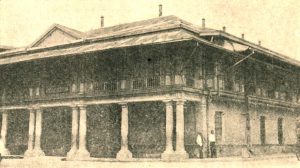
By Colonel Denby:
Q. How high are the shrubs?
A. Some of them pretty high, four or five feet.
Q. Does the tea grow on low grounds or by the mountain side?
A. On high ground.
Q. How low down; how near the sea?
A. Some distance from the river or the streams. During the wet season, there will be water in the streams, but during the dry season, there is no water in them.
Q. You say that wood grows in Nueva Ecija. Is there plenty of good wood, and can it be gotten out; is it accessible?
A. It is not very difficult, and still it is not easy, and of course after the timber is felled, the natives simply use these buffaloes or carabaos, and go and drag it to the water.
Q. Is tobacco raised in Nueva Ecija, good tobacco, and do they raise much of it?
A. Formerly, when the Spaniards monopolized the whole tobacco trade, it was very good, but since the monopoly does not exist, the quality has fallen off.
Q. Do the Filipinos know how to take care of tobacco, and how to cure the leaves well?
A. All this preparing, etc., is done by Filipinos. None of it is done by Chinese.
Q. Do the Chinese know how to do it?
A. The Chinese, some of them, would be able to do it, because some of them have tobacco plants up in China, too.
Q. You say that rice is one of the great crops in Nueva Ecija; what is the average return for rice?
A. Twenty years ago, that province produced about six or seven millions tubs of paddy in a year.
Q. Is raising rice a good business to go into?
A. There is not much work in planting paddy. That business is carried on principally by the rich men. All these people come and get a dollar from him and when the harvest is in, they pay him three tubs for a dollar. They get advances from him.
Q. Is it a good business? Does it pay for a man who has money to buy land and raise rice?
A. I think formerly, the produce was so great that it did not pay, but at present, there is not much produce, and I think it will pay.
Q. Do the Filipinos raise enough rice for their own people, or do they have to import rice?
A. The Filipinos go in for planting rice enough for their own consumption, and have something over for selling, to be exported.
Q. As a matter of fact, have they been exporting rice from these islands?
A. Formerly – about 30 years ago – they used to export rice from this place, because there was no hemp or tobacco or other crops raised; but because hemp and sugar have taken a lot of the space that was used for rice planting, the export of rice has fallen off.
Q. What is coffee worth here?
A. Over $40 a picul at present. Formerly, the province of Batangas had a great lot.
Q. How much was it worth when Batangas grew so much?
A. Over $10; between $10 and $20.
Q. Did the coffee plantations pay well when coffee was $10?
A. Those people in Batangas got rich from the planting of coffee.
Q. In Tayabas, you say that copra is one of the products. How much copra will one cocoanut tree produce in a year, and how much is it worth?
A. I can’t tell exactly. A tree will produce one year, and then the next it will not; but a lot of cocoanut come from Tayabas.
Q. Which is there the most money in, to dry the meat and sell copra or to press the oil out and sell the oil here?
A. Formerly, they pressed out the oil and sold the oil; at present, they confine themselves to making copra out of it.
Q. So copra pays better?
A. Yes, and it takes less work.
Q. How long does it take a cocoanut tree to bear after it is planted?
A. Six years.
Q. I have seen many times a cocoanut grow where there were no nuts because they have cut the blossoms to get tuba. Does that pay better than to raise the nuts?
A. The tuba is simply for their own private use and they don’t sell it.
Q. All these hats that are made in Laguna province are made in the same way, in the huts of the people who make them, or have they factories?
A. Just the same as in Bulacan.
Q. And the sleeping mats, the pataties, the same way?
A. Yes; the same way. When they make a mat, they go around to the market of the day. Some of the villages keep a market on certain fixed days, so every different week, there is a market in one place or another, and they take a great many mats and sell them.
Q. What is the tintaron?
A. It is wet indigo. It is not the dry indigo; aneals is the dry.
Q. What are petataps?
A. They are cigarette and cigar pasters – holders.
Q. You say that in Ilocos Sur and Ilocos Norte, cotton cloth is one of the products. Is cotton grown there?
A. Yes, the cotton is planted in the fields.
Q. Is it good cotton with long fiber?
A. There are some samples which I have. I will bring you a sample.
Q. Do they grow much cotton there?
A. They plant a lot. They must have a lot because from that they make their blankets, their cloth.
Q. But they make those on small looms in their houses?
A. Yes; their own foot looms.
Q. Are there any mechanical looms, any machine looms?
A. No; but all hand looms and foot looms.
Q. You say there is a copper mine there. What can you tell me about that?
A. It belonged formerly to Tomas Castro.
Q. Has that mine been worked?
A. Yes; that has been worked by Castro, and the produce from the mine has been brought to Manila and sold and exported to Hong Kong.
Q. Is the ore rich?
A. They worked it and cast it into blocks.
Q. Is it good ore?
A. I cannot say anything about the quality of the copper, as I have never been there.
Q. You say that in the Batanes Islands they raise cattle. Is cattle raising a good business here; is there money in it?
A. Yes; there is money in it. The cattle are left wild in the islands, and once in a while they give the cattle salt, and when they want the cattle, they catch them.
Q. Is there any sickness among the cattle here?
A. Yes; there is some sickness; many have murrain.
Q. Don’t they have to take care of them to prevent them dying of it?
A. There is a care taker in the islands who takes care of them.
Q. Do they have any foot disease among the cattle in the islands here?
A. Yes; they have a foot disease among the cattle here.
Q. What are cattle worth, beef cattle, put down here in Manila in ordinary times?
A. That depends on the size of the cattle; it runs from $10 to $20.
Q. What pays better, to raise cattle for beef or to raise buffalo?
A. For bullocks and such like, they use carabaos here.
Q. Suppose you wanted to go into cattle raising; would you consider it better to raise cattle for beef or for carabaos for people who wanted them for work?
A. The carabao is the better for selling; it brings more; they command a better price.
Q. Do they dare to let the carabao run wild, as they do other cattle, or do the carabao get ugly?
A. The same way; they are left wild; only one man looks after the whole.
Q. You haven’t put any mines down in the island of Mindoro; don’t you know if there are any mines down there?
A. I know of no mines in the island of Mindoro, simply that it produces some hemp. The Chinese haven’t gone to the other side of Mindoro. Four of them went there and all of them died, saving two.
Q. What did they die of?
A. Yellow fever.
Q. Now, you say that there is a gold mine in Mambulao?
A. In Camarines.
Q. Will you tell me about that, what kind of mine it is and how they work it?
A. It is a gold mine. Herman & Co. got up a goldmine company to work the mine and sent some machinery up there, but at last they have to give up. The company sustained a loss from it.
Q. What was the trouble?
A. Ever since that time I haven’t heard anything about it.
Q. What was the trouble; couldn’t they get laborers?
A. They couldn’t get laborers, the people didn’t like the machinery and all that sort of thing.
Q. Is that gold in the earth or gold in stones?
A. Both kinds. They used machinery to go and bore it out.
Q. Is there anybody working that mine now?
A. I haven’t heard anything about it.
Q. Did Herman & Co. own it?
A. Nothing has been said about it recently.
Q. What is cemanite?
A. Fine silk.
Q. What does it come from, what sort of plant?
A. From the pineapple. Some of them are used to make Chinese silk.
Q. What is the difference between cemanite and piña?
A. Cemanite is Chinese silk and the pineapple fiber mixed, and piña is simply the pineapple fiber.
Q. What becomes of the balati they get in these islands?
A. It is for eating. The Chinese like it. They export it to Shanghai. They send it to Shanghai and Canton. Balati is the local name.
Q. Who goes into that business, the balati business?
A. The balati is down four or five fathoms deep, and during months of April or March, the water is clear, when they go to the brink and some of them dive down for it.
Q. Do the natives or the Indians gather it?
A. The natives, the Filipinos and Mandayas, do it.
Q. What is about the size of one of them?
A. About a foot long, or about six or eight inches.
Q. You say that the pearl oyster, concha, is produced in Cebu; is that the same kind of concha that they get down near Jolo?
A. The pearls produced from these conchas at Jolo are much whiter; the pearls are worth more from Jolo.
Q. How much is the concha worth that comes from Jolo?
A. The price fluctuates from $20 to $60 sometimes.
Q. For what?
A. For a picul.
Q. Where do these pearl oyster go? Do they go to Singapore or do they come here to Manila?
A. Formerly, the shells, when there was no steamer running between Jolo and Singapore, came here; but now, there are steamers running between Jolo and Singapore, so they go direct to Singapore.
Q. Who buys them there?
A. Some English traders buy some and the Chinese buy, too.
Q. How much are they worth a picul over there?
A. They barter. Bargain in a kind of barter.
Q. They give other things for them?
A. Yes.
Q. Is anybody dredging for pearl oysters down there now, or are they brought up by divers?
A. In April or March, when the water is clear, they can see to some depth, about two or three fathoms or four fathoms, and they can dive down.
Q. Are there any machines used – any dredges?
A. No.
Q. What is algodon?
A. Algodon is cotton for pillowcases – for making the pillows.
Q. That grows on trees?
A. Yes; it is not fit for clothes; it is especially for pillows.
Q. What do you know about gold mines in Cagayan?
A. The natives or any people can go there and work as they like. This is taken out of the earth, too.
Q. What becomes of this gold that they get in that way?
A. Gold dust – it is sold in Manila. It is put up in bottles and sold.
Q. Who buys it, the Chinese?
A. Chinese and English buy it.
Q. I don’t see that you have got gutta-percha anywhere here. Don’t you know that that grows here?
A. Yes.
Q. Who is working on that?
A. The Moros, the natives.
Q. Where does it go to?
A. The india rubber is more valuable. Gutta-percha does not cost much.
Q. Do they get india rubber down there?
A. Formerly, they had india rubber, and they used to send that up here formerly, but now they never send it.
Q. And who is working the gutta-percha down there, the Chinamen?
A. No; the natives. The Chinese buy it from them.
Q. Don’t they send that up from Zamboanga now? They used to.
A. At present they ship from Cotabato and Sulu, and from Sulu to Singapore. There are four steamers running between those places every month.
Q. You speak of almacego from Mindoro and Mindanao. Where does it go to? Who buys it?
A. The English firms buy it.
Q. Here in Manila?
A. Yes, sir. At present, they send down to Jolo.
Q. How much is it worth?
A. It depends on the quality; some $4 a picul, some $7, some $8. The clean qualities will fetch most.
Q. How much are the nests – the nest that they get in the Calamianes Islands – worth now?
A. Three thousand dollars a picul – birds’ nests.
Q. Is there a market for all they can get?
A. You can’t get much of them, but any man in China will buy them.
Q. Where do the best nests come from here?
A. The Calamianes.
Q. In these nests from Guiangas, they have grass in them. How do they get the grass?
A. It is only the feathers of the bird. The nest is made of saliva.
Q. But in the Calamianes Islands, where they rob the nests a great deal, the birds haven’t saliva enough, and they put in grass to make the nest. I ask you how they get that grass out of them?
A. The grass, when the nest is put into water, swells out and you can extract the grass from the feathers.
Q. The nests are no good after the little birds hatch out, are they?
A. No; when the young are out, it is no good and they won’t take it.
Q. What months do they get these nests in?
A. I do not know.
By Colonel Denby:
Q. Do they sell much here?
A. Formerly, a great many places; two or three places down there used to send nests up here, but now the Calamianes only send the birds’ nests up here, and no other places send any here.
Q. You can buy them here?
A. Yes.
Q. What do they sell for?
A. Sometimes we have to pay $30 and sometimes $32 for a pound and a quarter.
Q. How many plates of soup will that make?
A. About 40 plates – 40 bowls.
Q. What do you know about sharks’ fins as an article of commerce?
A. There is a very small quantity here. The greater part of them are from the island of Jolo.
Q. Are there many of them down there? Is there much trade down there in sharks’ fins?
A. They go right down to Singapore; they don’t come here.
Q. Do they go to China – to Singapore – and are then shipped back into China?
A. Yes. There are two qualities – one white and one black; the white fin costs much more money.
Q. How much does it cost a picul?
A. Between $100 and $200 for the white, and those that are black between $60, $70 or $80 a picul.
Q. Do the Chinese here eat them?
A. Yes; they come from Hong Kong. I would ask as a favor that the officers or the provost-marshal would send their troops up there and take care of the Chinese; they are killing the Chinese in all parts, a great many of them.
Q. How would it do to have a native police here in conjunction with the soldiers?
A. If they are exclusively natives, it would not do, but if you take one American soldier and one Filipino, that would do.
Q. Don’t you think that the Filipinos, if they were police, would be able to protect the people better, because they know the town and the people and the language?
A. You can’t put any trust in them; for the least money or anything of that kind, they betray you.
Q. What is the reason that they hate the Chinese so?
A. The Chinese features are something the same in colors as theirs, and they want the Chinese to cut off their queues and join them; but of course the Chinese won’t do that, and if they want contributions of money, the Chinese will not let them have it.
Q. I hope something will be done to stop these assassinations we are having here every day. There ought to be something done, and we will use our influence in that regard.
A. A Chinese in Toroso, a peddler of cloth, was dragged in, and after one of his knees was cut and a wound inflicted in his bowels, the man was crawling out; but they dragged him in again and hit him in the head, and buried him close by a banana tree. That was only day before last.
With thanks the meeting adjourned.
